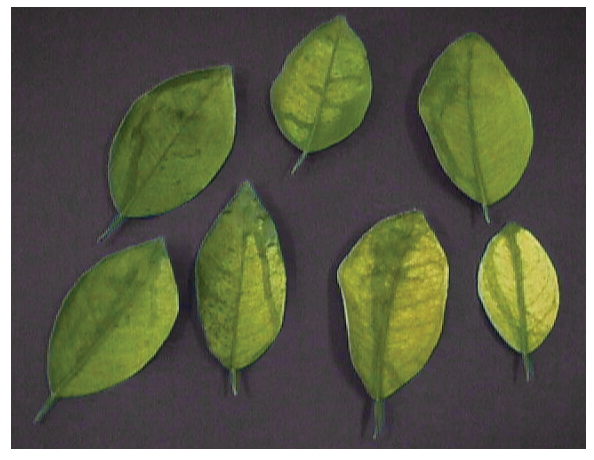
Types of Surfactants
Surfactants, also called wetting agents and spreaders, physically alter the surface tension of a spray droplet. For a pesticide or nutrient to perform its function properly, a spray droplet must be able to wet the foliage and spread out evenly over a leaf. Surfactants enlarge the area of product coverage, thereby increasing the plant’s exposure to the product applied. Surfactants are particularly important when applying products to waxy or hairy leaves. Without proper wetting and spreading, spray droplets often runoff or fail to adequately cover these surfaces.
Too much surfactant, however, can cause excessive runoff or deposit loss, thus reducing product efficacy. Surfactants are classified by the way they ionize or split apart into electrically charged atoms or molecules called ions. A surfactant with a negative charge is anionic, one with a positive charge is cationic, and one with no electrical charge is nonionic. Pesticide and nutrient activity in the presence of a nonionic surfactant can be quite different from activity in the presence of a cationic or anionic surfactant. Selecting the wrong surfactant can reduce the efficacy of a pesticide or nutrient product and injure the target plant.
Anionic surfactants are most effective when used with contact pesticides. Cationic surfactants should never be used as standalone surfactants because they usually are phytotoxic. Nonionic surfactants, often used with systemic pesticides, help pesticide sprays penetrate plant cuticles. Nonionic surfactants are compatible with most pesticides, and most EPA-registered pesticides that require a surfactant recommend a nonionic type. Pesticide formulations often contain surfactants to improve the suspension of the pesticide’s active ingredient. This is especially true for emulsifiable concentrate (EC) formulations.
Does Balchem recommend using a surfactant with Metalosate products?
The answer to this question is YES! Albion recommends the use of a nonionic surfactant with every application of Metalosate® products. We have seen from years of experience that this is critical to the success and efficacy of the application. Excellent results have also been observed when using an organosilicone surfactant.Research performed in South Africa on citrus showed the absolute necessity for the addition of a surfactant to increase the efficacy of Metalosate Iron applications.
In the test, the researchers observed a reduction of 54% in observed chlorosis. In Figure 1, it can be seen where concentrations of the Metalosate Iron were greater and areas of greener tissue formed in those areas. This is an example of what can happen when surfactants are not properly utilized. For more information regarding surfactants and their use with the Metalosate products please contact your local Balchem Plant Nutrition representative.
Figure 1: Improper Surfactant Use With Metalosate® Iron



